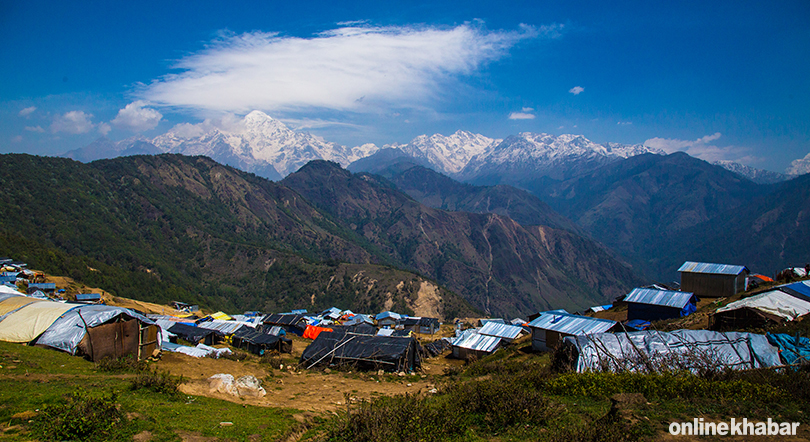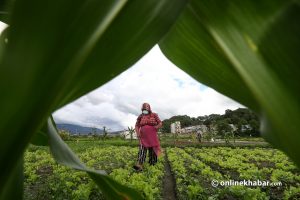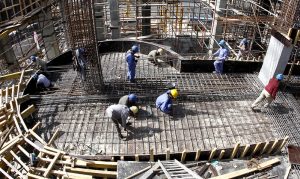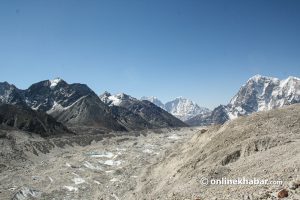The International Displacement Monitoring Centre estimates at least 32,000 people remain displaced in Nepal due to disasters and climate change impact, as of December 31, 2022. While the most disastrous incidents remain the recurring earthquakes in 2015 that led to the rise of internally displaced persons by 2.6 million, 8,400 others remain displaced due to regular monsoon impacts. While the persons affected by the armed conflict in the country were provided durable solutions, there is a lack of policies providing protection to internally displaced persons (IDPs) affected by climate change.
It needs to change immediately.
Internally displaced persons

Internally displaced persons (IDPs), according to the United Nations Guiding Principles on Internal Displacement, are “persons or groups of persons who have been forced or obliged to flee or to leave their homes or places of habitual residence, in particular as a result of or in order to avoid the effects of armed conflict, situations of generalised violence, violations of human rights or natural or human-made disasters, and who have not crossed an internationally recognised state border.”
In Nepal, such people are neglected by the state. The representative of the United Nations Secretary-General on the Human Rights Council also states, “Internally displaced persons in Nepal have been largely overlooked and neglected.”
With the 2015 earthquake leaving a mark on Nepal’s geography, climate change patterns in the Himalayan region, upscaling landslides and flood risks, will fuel internal displacements in the future.
Internally displaced persons in Nepal: Law vs limitations
In 2007, the National Policies on Internally Displaced Persons were adopted after the end of the Nepali civil war. The policies run parallel to the UN Guiding Principles, stipulating that the state shall not cause displacement, except for development projects which are to be operated for national interests. It further creates an obligation on the state to provide compensation to the internally displaced persons, rehabilitating them on a voluntary basis and special protection against displacement for marginal groups.
Additionally, the right against eviction from the house owned by the citizens and effective remedies are granted under Article 37(2) of the Constitution of Nepal and the Civil Rights Act, 2012. The constitution further creates a negative obligation on the government to not acquire, requisition or create an encumbrance on the property of any person, except in public interest.
The right of internally displaced persons to return, family reunifications, and the right to security were also recognised and granted under the 2006 Comprehensive Peace Accord. However, the National Policies of Nepal do not hold the status of legislation, which does not guarantee the government’s adherence to the obligations prioritising the rights of IDPs. There is a further gap in overviewing new displacements and climate change risks.
Nepal also lacks any comprehensive registration of IDPs in Nepal as well as any systematic monitoring of population movements. With Nepal constantly lacking in integrating data, the people most vulnerable to climate shocks and forced to be displaced due to natural disasters are not recognised.
Rights vs responsibilities

While the constitution may recognise certain basic rights of displaced persons, potential risks of vulnerable communities are not acknowledged and acted against. For example, in the aftermath of the 2015 earthquake in Nepal, the government of Nepal, working in collaboration with UNICEF, stopped an estimated 245 attempts of trafficking or illegal placement of children in care facilities. Child trafficking to India was already a problem prior to the earthquake.
It is foreseen that the government’s capacity is lacking in distributing humanitarian aid to displaced citizens on time in a substantive manner. While resources shape migration experiences, there is an immediate need to have provisions distinguishing migrants with and without enough resources before an apprehension of natural disaster/climate change response. The lack of such segregation causes migrants without resources to struggle for security and livelihood opportunities while others will be arbitrarily granted resources they did not require.
As reiterated by the UN Human Rights Office of the High Commissioner, human rights problems and violations faced by internally displaced persons in Nepal are related to poor security and protection; discrimination; inadequate food, shelter, healthcare or access to education for children; a lack of personal and property identification documents; and gender-based violence, sexual abuse and increased domestic violence.
Therefore, separate legislation to fill the lacunae for internally displaced persons affected by climate change and natural disasters is an immediate requirement for the country. The country sits at the convergence of the Indian and Eurasian tectonic plates, making it prone to earthquakes, further causing potential risks of landslides.
While preventing internal displacement during armed conflict is notoriously difficult, it is comparatively easier to determine the cyclical nature or geographical area of natural disasters, which can be used to avoid disaster displacement. Such provisions can further benefit in considering specific needs and risks people may face due to displacement caused by future disasters which shall make a comprehensive mechanism to adequately address the needs of the internally displaced persons in such situations.


























